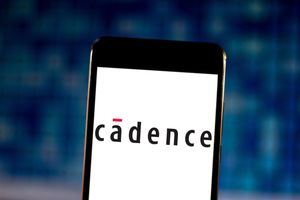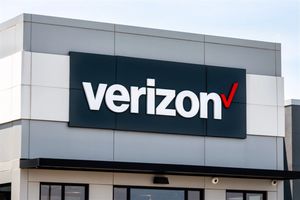Words by Leon Kaye
SOURCE: Henkel
DESCRIPTION:
With time running out to achieve the U.N. Sustainable Development Goals (SDGs) and limit global warming to 1.5 degrees Celsius by mid-century, companies are primed to meet the urgency of the moment in which we find ourselves today. And their stakeholders — from employees and customers to investors — now expect nothing less. Even as companies announce plans to pursue net-zero greenhouse gas emissions, a select few are going even further by seeking to go climate-positive — meaning they save more emissions than they generate.
Among this group of companies transforming their business models toward climate-positive operations is Henkel, a global company that markets a wide range of well-known consumer and industrial brands including All and Persil laundry detergents, Dial personal care products, and Loctite adhesives.
So, what does this push toward climate positivity look like, and how do employees get involved? To find out, TriplePundit spoke with Jillaine Dellis, vice president of sustainability, product safety and regulatory affairs for Henkel’s laundry and home care division, and Paul Sambanis, manager of sustainability and environment for the company’s adhesives operations in North America.
Tackling emissions requires work from the supply chain, operations and even consumers
From Dellis’ point of view, the shift toward a climate-positive model starts in the furthest reaches of Henkel’s supply chain. Henkel has developed its own goals around renewable raw materials with suppliers, including plans to switch from fossil fuel-based ingredients to more responsible and sustainable plant-based materials.
Change is also underway at the points of production within Henkel’s laundry and home care products division. For example, the company has rolled out All-branded detergent products that are ultra-concentrated, which reduces the amount of plastic packaging by about 60 percent. Then there are the upstream energy savings on the consumer side: “All of our formulas and detergents are effective in cold water, so that’s one way to save emissions,” Dellis said.
Going back to Henkel’s operations, a focus on energy efficiency, water consumption and waste reduction is also helping to drive the company toward its climate-positive goals. “Our sites are constantly developing new ideas and projects to boost efficiency and reduce emissions,” Sambanis told 3p. “To help standardize the process, we have worked with certifying more than half of our North American operating sites to the ISO 50001 Energy Management System standard. This has improved employee engagement and led to development and execution of energy-efficiency projects.”
For example, at an adhesives plant in Warren, Michigan, a team added variable frequency drives to air compressors — which alone reduced the site’s air compressor electricity consumption by 50 percent, Sambanis said.
Acknowledge what’s difficult
The journey toward becoming climate-positive or even net-zero is certainly challenging, often due to factors that are outside a company’s control. For Sambanis and his team, one challenge confronting Henkel’s climate-positive plans is developing alternatives to traditional thermal energy, which is key to the company’s ability to manufacture products out of raw materials.
“In the U.S. there is a lot of support to moving to electrification. The challenge is most local utility providers’ electrical grids need upgrades before we install equipment that requires more electricity,” Sambanis explained. “This requires additional costs and time for construction from the local utility provider that is outside of our control. If you look into alternatives, such as biomass or biogas, then challenges are the sourcing of these fuels and ensuring you have an adequate supply chain.”
As for Dellis and her colleagues in the laundry and home care division, limited control over what occurs away from Henkel’s office and manufacturing plants also poses a challenge. But consumer education and messaging can open more doors as the company continues its path to becoming climate-positive in its production. “Henkel works hard to share information with consumers to help them use these products effectively in order to contribute to net positivity,” she said. “Simple everyday things that consumers can do can help contribute: Don’t run the dishwasher when it isn’t full, for example. Also, wash clothes in cold water. If consumers can think about these steps and change their habits, the impacts can be significant.”
In terms of what it can control, Henkel is on track to reduce the use of fossil fuel-based plastic resin in packaging by 50 percent, while increasing the amount of post-consumer recycled content to 30 percent — and 100 percent of the company’s packaging will be recyclable by 2025. But again, these changes can’t occur in a vacuum: The consumer messaging and education components are key. “In addition to our packaging goals, we believe it’s important to communicate to consumers how to properly discard the packaging, to promote a circular economy," Dellis said.
Wider industry cooperation is also necessary, she added, especially when it comes to rethinking how packaging is manufactured, such as going from multi-layer packaging toward more streamlined single-layer packaging. “You can’t recycle multi-layer packaging,” Dellis explained. “We hope the industry keeps moving toward single-layer packaging, and our hope is that the system will catch up by shifting to improved, recyclable packaging.”
Why a climate-positive plan can serve as an effective employee engagement tool
For both Dellis and Sambanis, a climate-positive strategy is more than reducing emissions, rethinking packaging and finding more sustainable sources of energy.
“As you look at our history, we have developed both a top-down and shop floor-up strategy,” Sambanis explained. “Since our employees who work on the shop floor know the processes better than anyone, they can give valuable feedback and share their ideas with managers and executives. This balance helps us spend money in a smart way when it comes to accelerating our sustainability progress.”
Such buy-in is crucial, Sambanis insisted. Here’s his parting advice: “Ensure that you have a roadmap that has both top management and shop floor support. Work on constantly getting suggestions from the shop floor, since these ideas tend to be most creative and, in some cases, do not require large expenditures.”
Dellis offered a similar perspective, along with a four-point plan she said is applicable to any company, in any industry: “First, buy-in across the organization and executives is crucial. Two, make sure your company sets specific targets. Third, work cross-functionally, as net-zero and climate positivity aren’t only the responsibility of one department or team. Finally, employee communication is important, because employees are consumers themselves. If you share goals and progress, the results not only build pride in the organization, but can also engage employees as they are allowed to be part of an exchange of ideas.”
Bottom line, Dellis spelled out the directive for embarking on a climate-positive journey in five words: “We all own this together.”
This article series is sponsored by Henkel North America and produced by the TriplePundit editorial team.
KEYWORDS: Henkel








